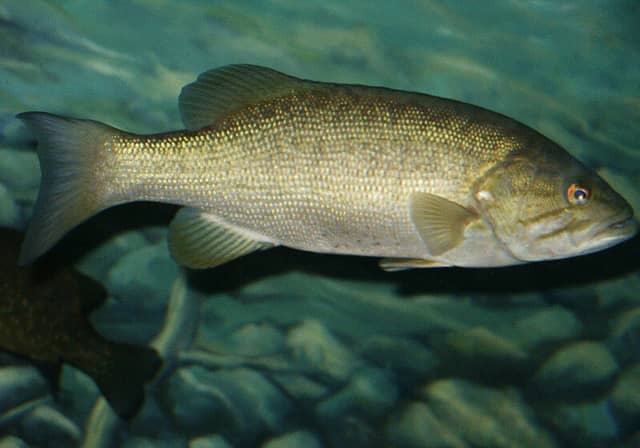Black Spots on Bass Worry Anglers
OutdoorHub Reporters 04.01.12

Many Pennsylvania anglers have reported their concerns of black spots on the bass they caught to the Department of Conservation and Natural Resources (DCNR). So many, in fact, that the DCNR has put together a FAQ article on spots and balls of a variety of colors that have been reported on fish.
Within the past three years, anglers have been pulling out more bass with black spots anywhere on the fish from the lip to the tail. Many anglers are concerned about what is causing the black blotches to appear.
According to Susquehanna River Biologist for the Pennsylvania Fish & Boat Commission Geoffrey Smith, these spots have been popping up more frequently on their smallmouth bass on the Susquehanna. Smith said many of the black, or melanistic, spots they see when sampling is done during prespawn, cold-water periods.
When he looked through he email of notifications about these spots, he noted that many comments are received during cold-winter months. But he sheds positive light on the mysterious spots and says there is nothing indicating that this condition is uncommon and it should be nothing to worry about.
The article put together by DCNR claims that the black spots may be attributed to black spot disease which is “caused by a pigment that the fish deposits around the larval stage of a parasitic digenetic trematode, usually a Neascus spp.”
The spots are actually a “black spot” parasite which is transferred to fish following a complex series of events. The parasite actually originates with a fish-eating bird, called the kingfisher. Then the larval parasite is digested where the eggs form in the intestine of the bird. Then, the parasite is deposited into the water and infects a snail which develops the parasite further into the cercaria life stage. The cercaria leaves the snail and actively penetrates the host fish.
According to the same DCNR article, the “black spot” parasite does not affect the growth or longevity of the infected fish, although massive infections in young fish may cause fish mortality. But anglers do not have to worry, the article says, “The parasite is incapable of infecting humans and, as is the case with all fish parasites, it is destroyed by thorough cooking. When fish are heavily infected, some anglers prefer to remove the skin to improve the appearance of the cooked fish.”
There is a discrepancy between DCNR’s findings and that of many anglers on various forums such as Kevin Van Dam’s and Michigan Sportsman who have heard contradicting statements that these fish are in fact healthy. Either way, current evidence suggests that there is no danger that these black spots are detrimental to humans.

